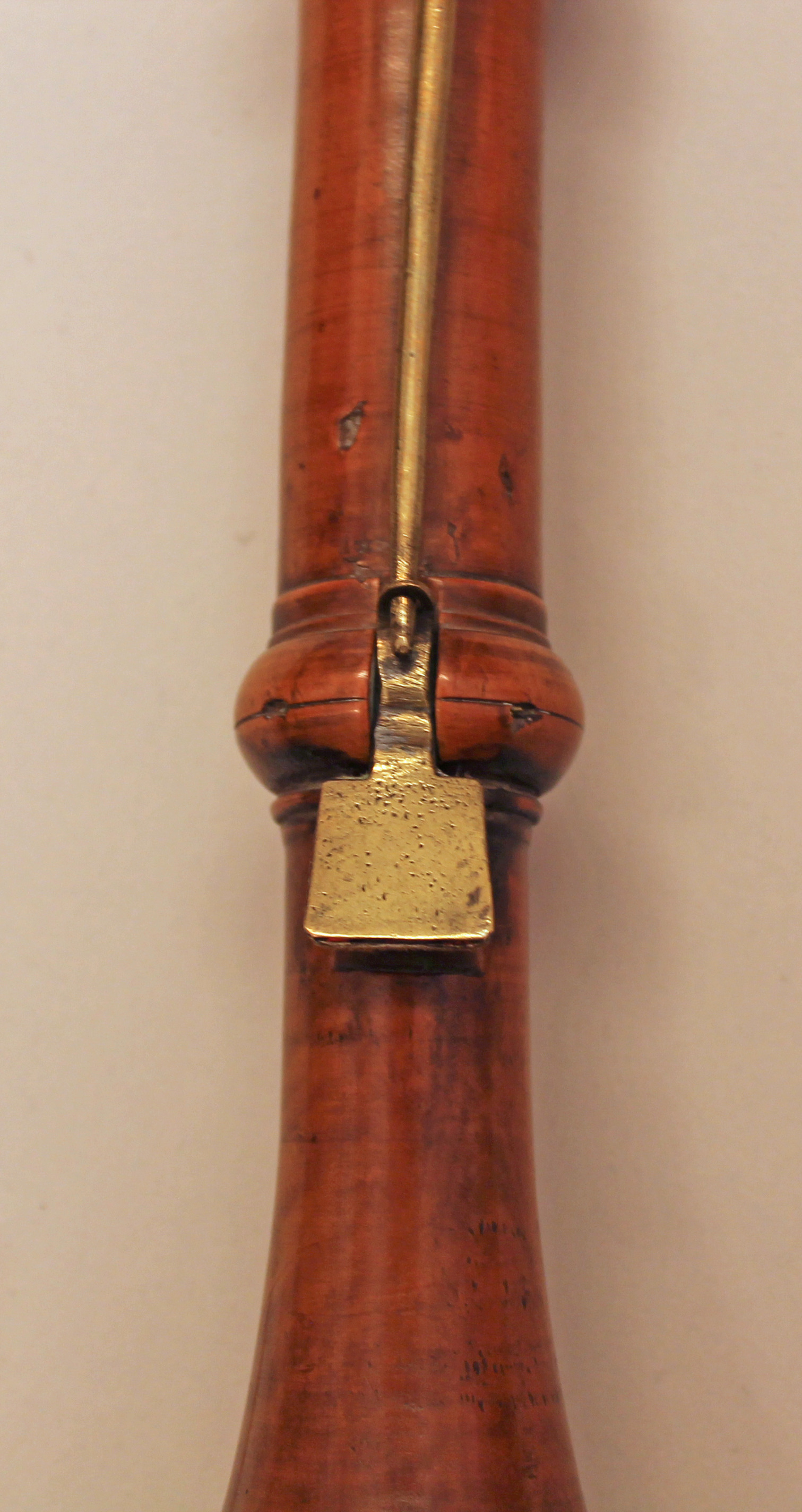Clarinet d'Amore in G
Not on view
Overall size: 775, 671 without crook;
Bore: c-hole 12.8; f-hole 13,0;
Conical part: 80
Technical description: Dark stained boxwood with brass keywork and crook. Originally presumably five pieces: mouthpiece with integral barrel, crook, upper section, middle section, lower section with integral bell. Mouthpiece and barrel are replacements. Three keyed instruments are rare. The third key is an extension of the lowest register and gives E3. This is an open standing key which has to be closed by a key, whereas the keys for throat A and the speaker key are closed tone holes, which have to be opened by a lever. The springs for the keys are attached to the wood, which is a characteristic of early instruments. The key levers are made in a primitive way with a bent brass sheet rather than made from a solid piece of brass. This leads to the conclusion that no smith was involved in making the keys. The flap of the E3 key is closed by the lever via an eye on top of the flap. This solution can also be found on instruments made by "I.P" (EUCHMI 5167, Germanisches Nationalmuseum Nürnberg, MI 131) and Rockobaur (Germanisches Nationalmuseum Nürnberg, MIR 425), all made around 1750. The keys are mounted in round wooden rings, the middle section has an integral wooden ferrule. The upper part of the foot joint still resembles a recorder foot joint. Speaker liner projects almost to the centre of the bore. Unusual step inside of the bell.
L0: T; speaker.
L1: T; throat A♮.
L2: T.
L3: T.
L4: E3/B♮4.
R1: T.
R2: T.
R3: T.
R4: T.
Keyhead type: flat square.
Keymount type: turned wooden rings, SATW.
No inscriptions.
Playing accessories: Barrel, mouthpiece, reed and cord are modern additions.
(Heike Fricke, 2014)
This image cannot be enlarged, viewed at full screen, or downloaded.
This artwork is meant to be viewed from right to left. Scroll left to view more.




